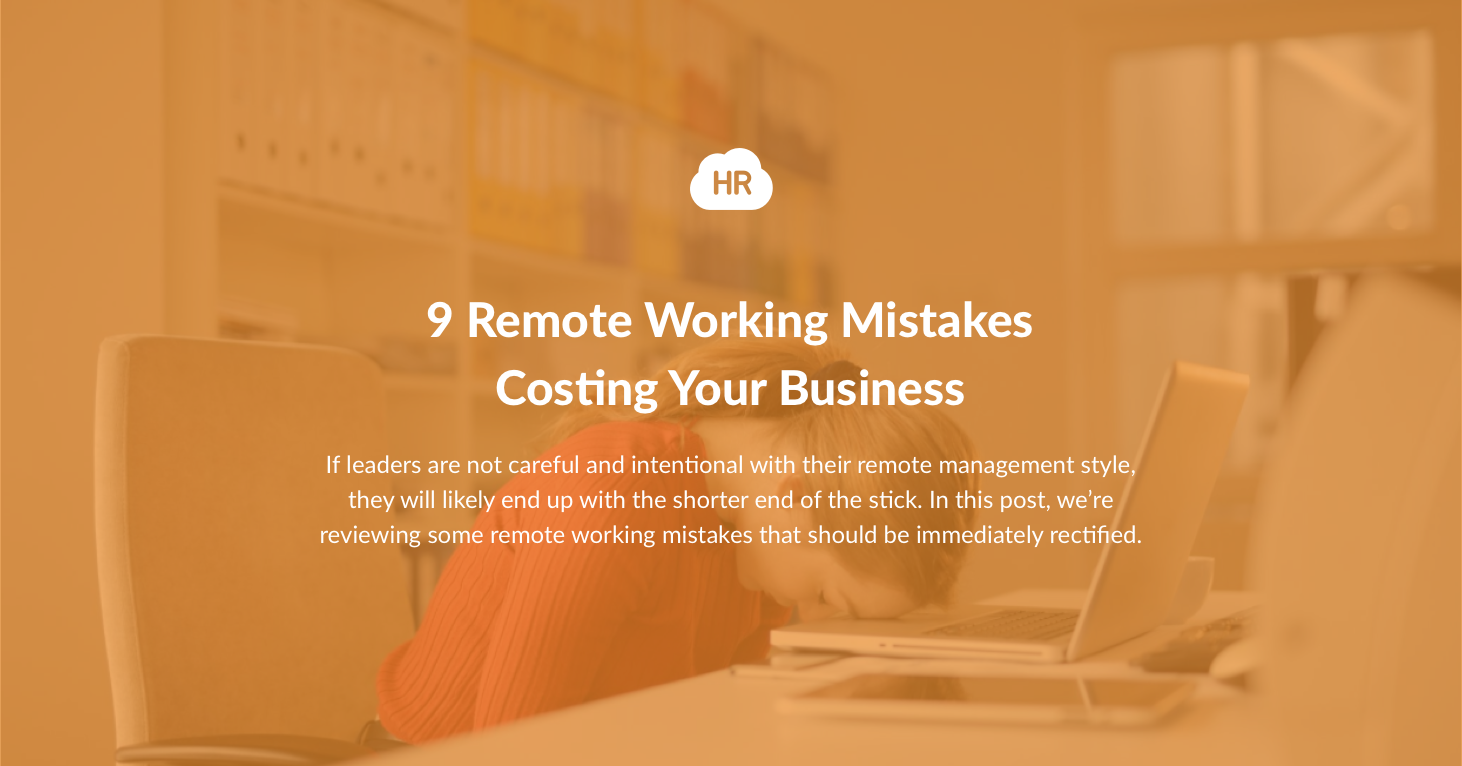Did you know working remotely existed even before the internet was created? Working from home was the norm back in the day when blacksmiths and carpenters set up shop at their homes. Later on, designated office spaces caught on and became the standard.
However, the global pandemic completely changed how companies viewed working from home. It was something that was majorly reserved for freelancers or creatives but not associated with other industries. If there was one good thing to come out of these unprecedented times, it has to be businesses realizing the potential of telecommuting.
No doubt working remotely promises a plethora of benefits for employers as well as employees. But managing remote teams is tricky, especially if your organization is new to it. Inefficient processes can lead to frustrated and dissatisfied remote workers.
If leaders are not careful and intentional with their remote management style, they will likely end up with the shorter end of the stick. In this post, we’re reviewing some remote working mistakes that should be immediately rectified. Let’s dive in.

1. No Flexibility
The main purpose of employees working remotely is defeated if you do not offer flexibility to them. A rigid work schedule of 9 to 5 is not the best idea when it comes to working from home. The reason is that different workers feel productive at different times of the day. Some might be most productive in the early morning, while others may be more focused in the afternoon. Additionally, employees may be living in different time zones.
Moreover, you also need to take into account that employees may be stuck with other tasks. For example, employees with kids may have to help them with an online school, which is usually conducted in the first half of the day.
2. Unclear Communication
Unclear communication can be an issue whether you’re working from home or office. It can lead to misunderstandings and mistakes. One pitfall of working remotely is the absence of non-verbal communication. It is difficult to convey gestures or to read facial expressions over video or phone calls.
This implies managers need to make extra effort to ensure they are communicating clearly. Rather than assuming that your team will figure out the communication collaboration requirements, explain goals and expectations with clarity. Also, encourage the team members to ask any questions and doubts they might have.
3. Not Providing Constructive Feedback
Giving employees real-time constructive feedback is key to improving their performance and overall development. Lack of feedback is not good for your employees and subsequently damages the organization.
Understandably, giving feedback over a video call or email is not easy. But that doesn’t mean you can neglect it.
Listening to criticism, while constructive, never feels good. To make the feedback more palatable for your employees, try the ‘sandwich approach.’ This involves sandwiching a negative piece of feedback between two positive ones.
4. Unsuitable Communication Tools
Seamless technology plays a crucial role in remote working. Without the right tools, you will end up with a confused workforce and missed deadlines, along with other repercussions.
While emails and virtual meetings are dependable methods to spread the message, they are not always the most effective options. Too many emails or virtual meetings can be overwhelming as well as a waste of time.
It’s time to pick a direct messaging channel such as Slack or Google Hangouts for day-to-day communication. Moreover, it is important to find a suitable project management platform for your company. Your team can further save time with LinkedIn automation tools.
5. Using Outdated Technology
At home, employees don’t have access to an IT department to take care of any technical difficulties. As a manager, it’s your responsibility to ensure that your team has access to the latest computers, WiFi plans, phones, and other essential devices.
6. Expecting Too Much
Just because employees are working from home doesn’t mean their work takes less time or effort. There’s no doubt that employees are saving time that’s usually spent on daily commutes. But this doesn’t mean managers can subconsciously penalize them by expecting more work.
According to research, 70% of employees that transitioned to working remotely during the pandemic are working on weekends as well. Moreover, 45% say they are working more hours during the week than they used to.
Putting pressure on employees with increased workloads is a recipe for disaster. Blurring the line between professional and personal life will eventually lead to burnout and diminished employee productivity. Managers should make an active effort to maintain and respect boundaries. Don’t expect employees to be on call after working hours and encourage them to take frequent breaks.
7. Neglecting One-on-One Time
This past year and a half have been a struggle, to say the least. Though vaccines are being speedily administered, WHO issued a warning about the imminent third wave, which is already showing up in different parts of the world. These uncertain times can take a toll on your employees' mental health and productivity.
Now more than ever, it’s imperative to show empathy to your team. As a manager, you should regularly schedule one-on-one talks with every employee, even though face-to-face talks are not possible. This will give them an opportunity to share any struggles they are facing. Is someone finding it difficult to stay productive at home? You can encourage them to make healthy lifestyle choices and share tips to manage their time better.
8. Scheduling Too Many Meetings
Since employees are working from home, scheduling more meetings may seem like the only option to discuss projects and collaborate. However, too many meetings are disruptive in a normal office, so you can imagine the impact when employees are working from home. Excessive meetings are a waste of time and lead to loss of productivity.
According to a survey, employees are three times more likely to deliver tasks agreed in writing in comparison to virtual meetings. This is because it is a lot more difficult to retain information shared in video conferences. And not to mention, technological snags can further impact the effectiveness of virtual meetings.
Managers should exclusively host virtual meetings only when it’s necessary. Instead, adopt time-efficient alternatives. If you need to share something that won’t likely invite many questions, you should send it via email or direct message. On the other hand, if you’re expecting questions, create an FAQ document where you can answer questions. For brainstorming sessions, make the most of an online whiteboard to get the creative juices flowing.
9. Lack of Socializing
From eliminating long commutes to working in a comfortable setting, working remotely promises several benefits to employees. However, one significant pitfall of working from home, especially with a pandemic, is the feeling of isolation. Prolonged loneliness increases stress levels, impacts sleep, and can lead to anxiety and depression.
In a physical office space, employees participate in water cooler talks. These casual interactions not only give employees a social outlet but also enforces a sense of camaraderie.
While recreating this on a virtual level may be challenging, but it’s absolutely doable. You can host happy hour every other Friday after work. During this time, encourage employees to talk about anything other than work. Virtual game tournaments and online trivia evenings are also fun ways to help your team bond.
Additional resources:
- Know where your communication can be improved with expert advice from Neon Ambition
- 4 ways your business can help employees asking for a hybrid work schedule
- Flexible working: the way of the future
Final Words
Remote working policies can be beneficial to your work environment in several ways. From lower operational costs to increased flexibility, working from home is a working model worth exploring. The lack of physical proximity to your employees can be challenging for leaders but can be overcome with the right systems in place.
About Author: Stefan Smulders is a SaaS Entrepreneur | Bootstrapped to €3M ARR in just 1year | Founder of Worlds safest software for LinkedIn Automation Expandi.io | Vegan | Father
Keep Reading
Importance of Onboarding: Purpose, Benefits, and What It Means for Your Workplace
Think about the last time you joined a new team. You had questions, maybe even doubts.
The Most Common Hiring Mistakes in the Healthcare Industry
The hiring process can be tedious in the healthcare industry, and it may be tempting to

